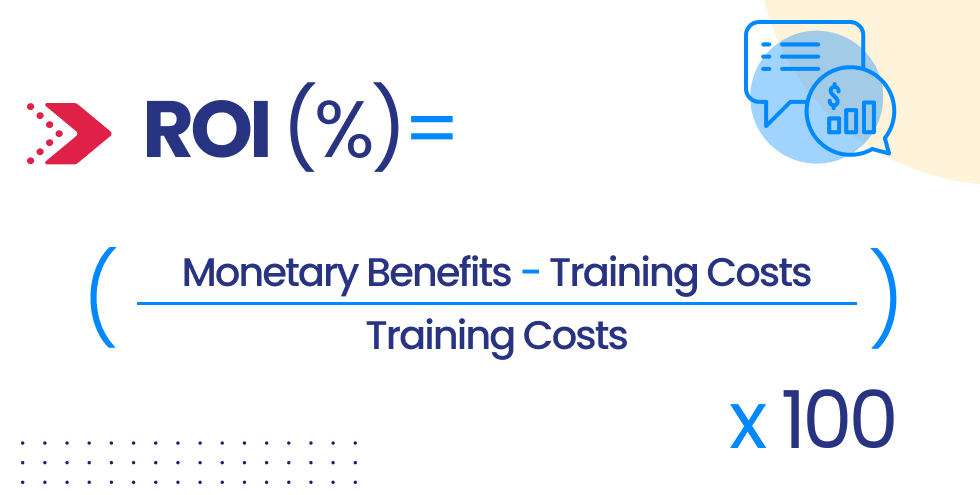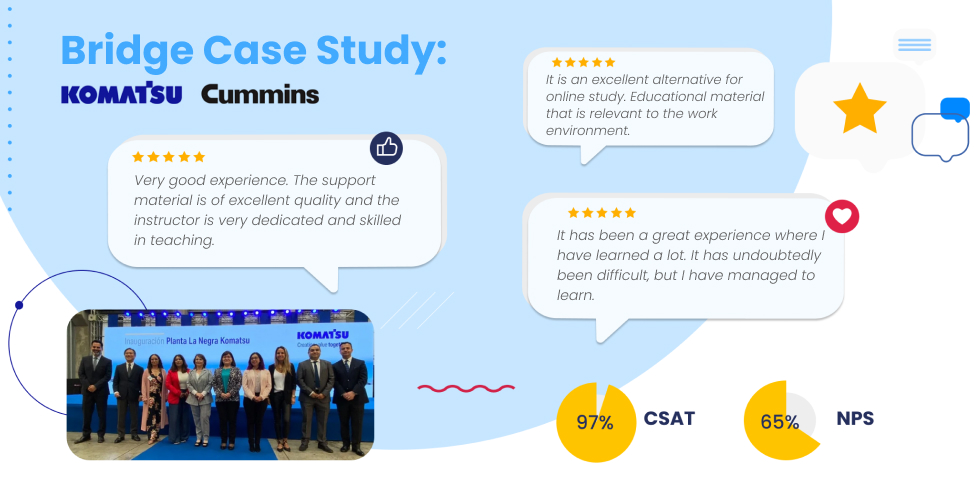In today’s globalized business landscape, investing in employee language training has become increasingly important for companies looking to stay competitive and drive growth. However, justifying the investment in language training programs often requires demonstrating a clear return on investment (ROI). We explore the key metrics, strategies, and best practices for measuring the ROI of corporate language training initiatives.
Understanding Language Training ROI
Language training ROI refers to the financial return a company can expect from investing in improving its employees’ language skills. It is calculated by comparing the monetary benefits gained from the training program against the costs incurred. Measuring ROI is crucial for businesses as it helps justify investments, identify areas for improvement, optimize resource allocation, enhance employee performance, and maintain a competitive edge in the global market.

Key Metrics for Measuring Language Training ROI
To effectively measure the ROI of language training programs, companies should track several key metrics:
- Pre- and post-training assessments: Gauge knowledge and skill improvement by comparing employee performance before and after training.
- Employee feedback: Collect feedback on the quality and relevance of the training to assess its effectiveness and identify areas for improvement.
- Skills application: Monitor how employees apply learned language skills in their daily tasks to determine the practical impact of the training.
- Cost-benefit analysis: Compare the total cost of training (materials, instructor fees, employee time) against the realized benefits to evaluate the program’s financial efficiency.
- Time-to-competency: Measure the time it takes for employees to achieve desired language proficiency levels after completing the training.
- Employee retention: Track the impact of language training on employee retention rates, as improved skills can lead to higher job satisfaction and loyalty.
- Business metrics: Analyze the correlation between language training outcomes and key business metrics, such as increased sales, improved customer satisfaction, or expanded global reach.

Strategies for Optimizing Language Training ROI
To maximize the ROI of language training programs, companies can implement the following strategies:
- Align training objectives with business goals: Ensure that language training programs support and contribute to the overall objectives of the organization.
- Customize training content: Tailor the training material to the specific needs of the company and its employees to maximize relevance and effectiveness. At Bridge we offer hyper-personalized content to meet even the most specific use cases.
- Utilize various delivery methods: Employ a mix of e-learning, teacher-led instruction, language apps and social learning to cater to different learning styles and provide variety. Bridge’s AI powered Conversation Copilot is the a great example as it allows students to practice speaking and listening outside the classroom using the latest Language technologies.
- Regularly update training materials: Keep the content up-to-date with the latest EdTech and best practices to maintain its value and relevance.
- Continuously evaluate and adapt: Regularly assess the impact of the training program and make necessary adjustments based on feedback and results. At Bridge our HR Platform provides key metrics and analytics that allows training managers to track learning and engagement in our language training programs.
- Provide ongoing support: Offer resources and support beyond the initial training to reinforce learning and ensure long-term skill retention.
- Leverage technology: Utilize learning management systems (LMS) and data analytics tools to track progress, measure outcomes, and gain valuable insights for program optimization.

Quantifiable Results: A Remarkable ROI
The language training program designed by Bridge for Komatsu Cummins Chile has demonstrated outstanding return on investment (ROI) across several key aspects:
High levels of satisfaction and recommendation: The program achieved a Customer Satisfaction Score (CSAT) of 97%, reflecting near-unanimous satisfaction among participants. Additionally, with a Net Promoter Score (NPS) of 65%, it is clear that employees not only greatly valued the training but would also be willing to recommend it to others, highlighting a positive ROI in terms of loyalty and satisfaction.
Extensive coverage and program reach: Over 600 employees were trained, emphasizing the positive impact of this investment by significantly improving the language skills of a large portion of the teams. This improvement translates into smoother communication and greater operational efficiency throughout the organization.
Direct impact on productivity: The advancement in language skills enabled employees to communicate more effectively with international partners and clients. This not only facilitates the management of global projects but also opens new business opportunities, showcasing a return on investment that drives the company’s long-term growth and competitiveness.
Improvement in the learning experience: Positive feedback from participants, who highlighted the quality of the materials and the dedication of the Global Teachers, underscores that the investment in training not only enhanced language skills but also provided a highly valued learning experience for professionals. This can influence talent retention and strengthen the work environment, factors that also contribute to the program’s ROI.
These results show that the investment in the language training program not only met its initial objectives but also generated tangible and strategic benefits for Komatsu Cummins Chile, confirming the value of Bridge’s personalized and results-oriented approach.

Best Practices for Implementing Language Training Programs
To ensure the success of language training programs and maximize ROI, companies should follow these best practices:
- Conduct a thorough needs assessment to identify language skill gaps and prioritize training areas.
- Secure buy-in from leadership and align training goals with organizational objectives.
- Choose reputable and experienced language training providers.
- Foster a culture of continuous learning and encourage employee participation.
- Regularly collect feedback and monitor progress to make data-driven decisions.
- Celebrate successes and communicate the impact of the training program to stakeholders.
Conclusion
Measuring the ROI of corporate language training programs is essential for ensuring that investments in employee development deliver tangible benefits to the organization. By tracking key metrics, implementing effective strategies, and learning from successful case studies, companies can optimize their language training initiatives and drive long-term business success. Start measuring and improving your language training with ROI today to unlock the full potential of your multilingual workforce.
References:
- MacMahon, M. (2018, July 23). What’s The ROI Of English Language Training For Your Employees? Talaera. https://www.talaera.com/blog/2018-07-23-roi-english-training/
- Saad, S. S. (n.d.). Measuring Training Effectiveness and ROI: A Comprehensive Guide. Wide Impact. https://wide-impact.com/blog/measuring-training-effectiveness-and-roi-a-comprehensive-guide/








